
Participants in Sexual Harassment policy process Fall 2021

• Title IX Scope & Jurisdiction
• Support and Interim Measures
• The Investigation Process
• The Hearing Process
• Alternative and Parallel Processes
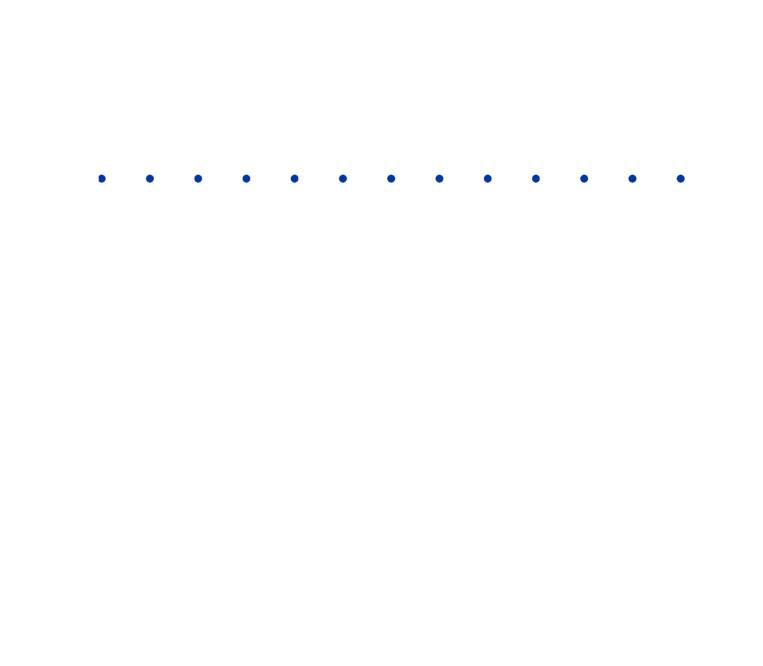
• Regulatory and Caselaw Update
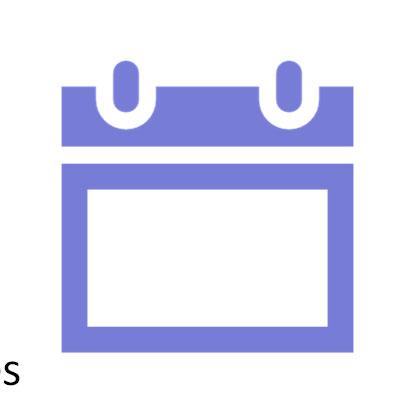
© 2019 Husch Blackwell LLP
Title IX & Sexual Harassment ResponseJuly 27, 2021 © 2021 Husch Blackwell LLP. All Rights Reserved.
2021 Husch Blackwell LLP. All Rights Reserved.
©
Title IX & Sexual Harassment Response
© 2021 Husch Blackwell LLP
1 2
Agenda


What is Title IX?
“[N]o person in the United States shall on the basis of sex be excluded from participation in, be denied the benefits of, or be subjected to discrimination under any education program or activity receiving federal financial assistance.” 32
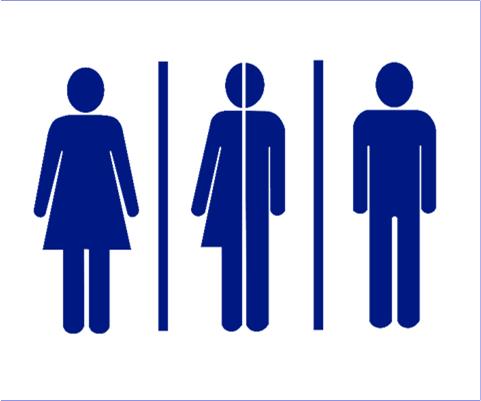
Title IX & Sexual Harassment ResponseJuly 27, 2021 © 2021 Husch Blackwell LLP. All Rights Reserved. Title IX Scope & Jurisdiction
2021 Husch Blackwell LLP
©
C.F.R. §106.31 3 4

Can Title IX apply to entities other than colleges and universities?

• Yes
• If those entities have an educational program and receive federal financial assistance
• E.g., K‐12 schools; charter schools; hospitals
© 2021 Husch Blackwell LLP

Does Title IX apply to persons?
• No
• But Title IX requires covered educational institutions to have certain policies that prohibit sexual harassment
• And those policies apply to persons
© 2021 Husch Blackwell LLP

Title IX & Sexual Harassment ResponseJuly 27, 2021 © 2021 Husch Blackwell LLP. All Rights Reserved.
5 6
What sexual harassment does Title IX apply to?
• Title IX applies to sexual harassment in the “education program or activity” of a federal funding recipient
Title IX defines “education program or activity” to include the “operations” of educational institutions
• Title IX does notapply to private conduct occurring in private location that is not part of education program/activity
©
What are examples of education programs and activities?
Title IX & Sexual Harassment ResponseJuly 27, 2021 © 2021 Husch Blackwell LLP. All Rights Reserved.
2021 Husch Blackwell LLP
Sexual Harassment Education program / activities
All operations
2021 Husch Blackwell LLP Admissions Hiring Workplace In‐person classes Dormitories Recreational amenities on campus Sports teams Virtual classes Performances on campus Off‐campus trips or experiences organized by the institution Sponsored organization activities Anything else that happens on‐campus
•ED:
©
7 8

One student in an online College course conducted by Zoom repeatedly sends vulgar and propositioning messages to another student using the Zoom private chat feature. The two students are physically in different places during the course.



Student is sexually assaulted by teammates in a locker room after a practice that takes place at the University’s on‐campus field house. The teammates are all the same sex and gender.
Title IX & Sexual Harassment ResponseJuly 27, 2021 © 2021 Husch Blackwell LLP. All Rights Reserved.
Blackwell LLP
© 2021 Husch
Example (included in EP&A)
Blackwell LLP
© 2021 Husch
Example (included in EP&A)
9 10


Two students in the nursing program are in clinical rotations at a local hospital supervised by a preceptor who receives compensation from the College. One student sexually assaults the other in a breakroom commonly used by students in the program.


On a Saturday night, two students meet at a local bar and eventually go to a local hotel to “hook up.” One student exceeds the bounds of consent by attempting to choke the other student during the sexual encounter, despite having never discussed it.
Title IX & Sexual Harassment ResponseJuly 27, 2021 © 2021 Husch Blackwell LLP. All Rights Reserved.
2021 Husch Blackwell LLP
©
Example (included in EP&A)
2021 Husch Blackwell LLP
©
Example (excluded from EP&A)
11 12

Example (excluded from EP&A)

A student parks on the far side of a public street adjacent to campus and is car‐jacked while leaving for the day. The perpetrator drives the student to a secluded location across town and rapes the student.

Does Title IX apply to sexual harassment in other countries?
• No –the Department of Education interprets Title IX to apply only within the geographic boundaries of the United States
• Other countries may have laws that govern sexual harassment



©
Title IX & Sexual Harassment ResponseJuly 27, 2021 © 2021 Husch Blackwell LLP. All Rights Reserved.
2021 Husch Blackwell LLP
©
2021 Husch Blackwell LLP
13 14

When mustwe dismiss a Title IX complaint?
• Alleged sexual harassment occurred outside education programs or activities
• Alleged misconduct could not be sexual harassment even if true
• Complainant is not a current participant in education programs and activities at time of complaint
When maya case be dismissed?
• Complainant withdraws allegations in writing
• Respondent is no longer employed or is no longer a student
• Specific circumstances prevent the institution from gathering evidence sufficient to reach a determination
©
Title IX & Sexual Harassment ResponseJuly 27, 2021 © 2021 Husch Blackwell LLP. All Rights Reserved.
2021 Husch Blackwell LLP
©
2021 Husch Blackwell LLP
15 16

What other policies might apply?
• Institutions are free to use
Student code of conduct
Faculty/employee handbooks
Other policies
to address sexual harassment that does not occur in an education program or activity
©
©
Title IX & Sexual Harassment ResponseJuly 27, 2021 © 2021 Husch Blackwell LLP. All Rights Reserved.
2021 Husch Blackwell LLP
2021 Husch Blackwell LLP
on the
of sexthat is: Quid pro quo harass‐ment Hostile environment harassment Sexual assault Dating violence Domestic violence Stalking 17 18
What is sexual harassment? Conduct
basis

What is quid pro quo?
• An employee of the institution conditions the provision of some aid, benefit, or service on another person’s participation in unwelcomesexual conduct
Often arises in the employment context or where an employee holds a position of authority over a student
©


A graduate student gives an undergraduate a failing grade on a lab exercise. When the undergraduate visits during office hours, the graduate student indicates a willingness to improve the grade if the undergraduate performs sexual favors.
Title IX & Sexual Harassment ResponseJuly 27, 2021 © 2021 Husch Blackwell LLP. All Rights Reserved.
2021 Husch Blackwell LLP
That
2021 Husch Blackwell LLP
This ©
Example of quid pro quo
19 20

What is hostile environment?
Unwelcome conduct determined by a reasonable person to be so severe, pervasive, andobjectively offensive that it effectively denies a person equal access to the recipient’s education program or activity.
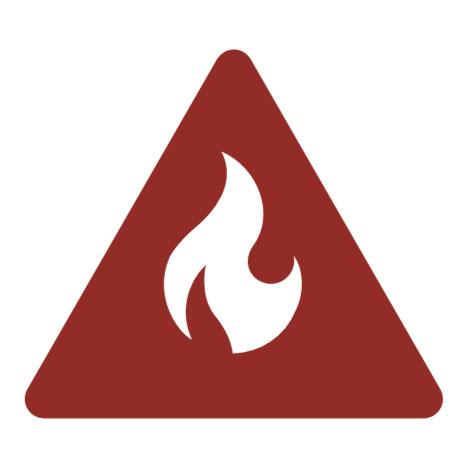
©

How do we determine if a hostile environment exists?
• Consider all the facts and circumstances, such as:
The type of misconduct
The frequency of the misconduct
Where the misconduct occurs
Whether a power differential exists, etc.
• From the perspective of a reasonable person
©
Title IX & Sexual Harassment ResponseJuly 27, 2021 © 2021 Husch Blackwell LLP. All Rights Reserved.
2021 Husch Blackwell LLP
Blackwell LLP
2021 Husch
21 22

Example of hostile environment


Political Science student repeatedly jokes and denigrates Business student based on Business student’s gender expression. These jokes occur in class, in the bookstore where both students work, and in the residence hall at night. Political Science student always tells the jokes in the presence of others. ©

Another example of hostile environment
Business office employee repeatedly rubs the business office employee’s own genitals in the presence of an office colleague, to the whom the business office employee is attracted. The business office employee also repeatedly touches the colleague’s shoulders and hair, without asking. The two work in the same room. The colleague is “grossed out” and gets stressed about what the business office employee might try next.
Title IX & Sexual Harassment ResponseJuly 27, 2021 © 2021 Husch Blackwell LLP. All Rights Reserved.
© 2021 Husch Blackwell LLP
2021 Husch Blackwell LLP
23 24

Another example of hostile environment
Art student expressed a desire to have sex with Math student, who declines. Thereafter, at numerous Greek parties attended by both, Art student asks if Math student is “ready to fu*k yet.”
Math student stops going to Greek parties to avoid being confronted by Art student.


Does the First Amendment matter?

• While sexual harassment can be verbal or written in nature, sexual harassment under Title IX does not include conduct that is protected by the First Amendment
• The subjective offensiveness of speech, alone, is not sufficient to create a hostile environment
©
Title IX & Sexual Harassment ResponseJuly 27, 2021 © 2021 Husch Blackwell LLP. All Rights Reserved.
2021 Husch Blackwell LLP
©
2021 Husch Blackwell LLP
25 26


Student, a cis‐female, leads an on‐campus protest opposing the institution’s switch to gender‐neutral housing and gender‐neutral bathrooms. During the protest, Student holds a sign that reads: “I don’t want to shower with dudes!” ©

During a University forum on gender issues, Student argues that another student is a bigot and part of “the patriarchy” because the other student rejects the entire construct of gender identity. Looking at the other student, Student says: “I don’t have to dress or behave a certain way just because I have a pu**y!!!.”

Title IX & Sexual Harassment ResponseJuly 27, 2021 © 2021
Blackwell LLP. All Rights Reserved.
Husch
© 2021 Husch Blackwell LLP
Example (not-hostile environment)
2021 Husch Blackwell LLP
Example (not-hostile environment)
27 28

What is sexual assault?
Title IX regulations define “sexual assault” as incorporating the following classes of conduct: Rape Sodomy Sexual assault with an object Fondling Incest
© 2021 Husch Blackwell LLP

What is rape?
Having carnal knowledge of a person, without the consent of the victim, including instances where the victim is incapable of giving consent because of age or because of temporary or permanent mental or physical incapacity. There is “carnal knowledge” if there is the slightest penetration of the vagina or penis by the sex organ of the other person. Attempted rape is included.
© 2021 Husch Blackwell LLP
Title IX & Sexual Harassment ResponseJuly 27, 2021 © 2021 Husch Blackwell LLP. All Rights Reserved.
29 30

What is consent?
• Words or actions that a reasonable person in the respondent’s perspective would understand as agreement to engage in the sexual conduct at issue
• A person who is incapacitated is not capable of giving consent
• Consent cannot be procured by coercion
• Be aware of minimum age of consent
©

What is incapacity?
Incapacity refers to a state where a person does not appreciate the nature or fact of sexual activity due to the effect of drugs or alcohol consumption, medical condition or disability, or due to a state of unconsciousness or sleep.


©
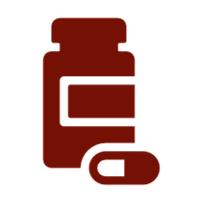

Title IX & Sexual Harassment ResponseJuly 27, 2021 © 2021 Husch Blackwell LLP. All Rights Reserved.
2021 Husch Blackwell LLP
2021 Husch Blackwell LLP
31 32

Freshman and Sophomore are drinking shots in Freshman’s dorm room and talking. Freshman encourages Sophomore to take several hydrocodone to “loosen up.” After 30 minutes, Sophomore cannot stand, calls Freshman the wrong name, and has trouble staying awake. Freshman then has sex with Sophomore who lays unresponsive and does not wake up for six hours.



Third‐Year and Fourth‐Year go out to dinner and share one bottle of wine over the course of two hours. They return to Third‐Year’s on‐campus apartment and watch a movie. Fourth‐Year grows tired, brushes their teeth, and climbs into bed. While in bed, the two make out and have sex. Fourth‐Year wakes up the following morning with a headache.
©
Title IX & Sexual Harassment ResponseJuly 27, 2021 © 2021 Husch Blackwell LLP. All Rights Reserved.
Blackwell LLP
© 2021 Husch
Example (incapacitated)
2021
Blackwell LLP
Husch
Example (not-incapacitated)
33 34

What is statutory rape?

Sexual intercourse with a person who is under the statutory age of consent as defined by law.
©


Short Student and Tall Student meet at a tailgate party, go to Short’s dorm room after the football game, and have sex. Both are sober. Unbeknownst to Short, Tall is a dual‐enrolled high school student who is 16. Short is 22. Tall’sparents learn of the sexual encounter and make a report to the Title IX Coordinator.
Title IX & Sexual Harassment ResponseJuly 27, 2021 © 2021 Husch Blackwell LLP. All Rights Reserved.
2021 Husch Blackwell LLP
Blackwell LLP
© 2021 Husch
Example
35 36

What is sodomy?
Oral or anal sexual intercourse with another person without the consent of the victim, including instances where the victim is incapable of giving consent because of age or because of temporary or permanent mental or physical incapacity.

Example

Medical Student and Nursing Student discuss and agree to vaginal intercourse. The room is dark. After making out, and without discussion, Medical Student insert’s Medical Student’s penis into Nursing Student’s mouth. Nursing Student reacts negatively and says: “No, I don’t do that. Get out.” Medical Student has always had oral sex prior to vaginal sex in previous sexual encounters and expected the same in this case.
©
Title IX & Sexual Harassment ResponseJuly 27, 2021 © 2021 Husch Blackwell LLP. All Rights Reserved.
2021 Husch Blackwell LLP
©
2021 Husch Blackwell LLP
37 38

What is sexual assault with an object?
Using an object or instrument to unlawfully penetrate, however slightly, the genital or anal opening of the body of another person, without the consent of the victim, including instances where the victim is incapable of giving consent because of age or because of temporary or permanent mental or physical incapacity. An “object” or “instrument” is anything used by the perpetrator other than the perpetrator’s genitalia.
©

What is fondling?
Touching of the private body parts of another person for the purpose of sexual gratification, without the consent of the victim, including instances where the victim is incapable of giving consent because of age or because of temporary or permanent mental or physical incapacity.
©
Title IX & Sexual Harassment ResponseJuly 27, 2021 © 2021 Husch Blackwell LLP. All Rights Reserved.
2021 Husch Blackwell LLP
2021 Husch Blackwell LLP
39 40

Example of fondling
Law Student and Music Student are “making out” for the first time. Law Student begins to “feel up” Music Student’s chest from outside the clothing. Music Student pushes Law Student’s hands away. After more kissing, Law Student places their hands up Music Student’s shirt and touches Music Student’s bare chest. Music Student responds: “I said no. Stop.”


What is incest?
Sexual intercourse between persons who are related to each other within the degrees wherein marriage is prohibited by law.
©
Title IX & Sexual Harassment ResponseJuly 27, 2021 © 2021 Husch Blackwell LLP. All Rights Reserved.
2021 Husch Blackwell LLP
©
2021 Husch Blackwell LLP
41 42

What is domestic violence?
Felony or misdemeanor crimes of violence committed by a current or former spouse or intimate partner of the victim, by a person with whom the victim shares a child in common, by a person who is cohabitating with or has cohabitated with the victim as a spouse or intimate partner, by a person similarly situated to a spouse of the victim under the domestic or family violence laws of the state, or by any other person against an adult or youth victim who is protected from that person’s acts under the domestic or family violence laws of the state.

What is dating violence?
“Dating Violence” is violence committed by a person:
• Who is or has been in a social relationship of a romantic or intimate nature with the victim; and
• Where the existence of such a relationship will be determined based on consideration of the following factors:
• The length of the relationship;
• The type of relationship; and
• The frequency of interaction between the persons involved in the relationship.
Title IX & Sexual Harassment ResponseJuly 27, 2021 © 2021 Husch Blackwell LLP. All Rights Reserved.
© 2021 Husch Blackwell LLP
© 2021 Husch Blackwell LLP
43 44

Example of dating violence

What is stalking?
Engaging in a course of conduct directed at a specific person that would cause a reasonable person to:
• Fear for their safety or the safety of others; or
• Suffer substantial emotional distress.
Two graduate students have been dating for several months. One walks in on the other making out with a coworker on the sofa in the coworker’s on‐campus office. The student who walked in loudly shouts derogatory expletives at the other, threatens to “kill you both,” and forces/yanks the other graduate student by the arm and off the sofa. ©


Title IX & Sexual Harassment ResponseJuly 27, 2021 © 2021 Husch Blackwell LLP. All Rights Reserved.
2021 Husch Blackwell LLP
©
2021 Husch Blackwell LLP
45 46

Example of stalking

Housing employee breaks up with Facilities employee. Facilities employee repeatedly shows up at the Housing office crying and asking for Housing employee. Facilities employee repeatedly instant messages Housing employee during work to talk about their relationship. Housing employee rebuffs Facilities employee. One night, Facilities employee follows Housing employee home by car from the institution’s parking lot, prompting Housing employee to call police.

Does Title IX also prohibit retaliation?
Yes –Title IX prohibits intimidation, threats, coercion, or discrimination against any individual for the purpose of interfering with any right or privilege secured by Title IX and its implementing regulations or because an individual has made a report or complaint, testified, assisted, participated in or refused to participate in any manner in an investigation, proceeding, or hearing under the institution’s policy.
Title IX & Sexual Harassment ResponseJuly 27, 2021 © 2021 Husch Blackwell LLP. All Rights Reserved. © 2021 Husch Blackwell LLP
© 2021 Husch Blackwell LLP
47 48

Example of retaliation
A student reports that another committed sexual assault. Believing that the reporter has filed false accusations, a third student—the roommate of the respondent—spray paints derogatory terms on the reporter’s car.


Example of Retaliation????
A student reports that another committed sexual assault. Respondent’s lawyer sends the complainant a letter stating that the report is false and that the complainant is committing defamation. The letter demands the complainant retract the report or respondent will sue.

Title IX & Sexual Harassment ResponseJuly 27, 2021 © 2021 Husch Blackwell LLP. All Rights Reserved. © 2021 Husch Blackwell LLP
© 2021 Husch Blackwell LLP
49 50

On‐Campus Student and Online Student connect on Tinder. They meet in a campus parking lot where they take several shots of hard alcohol and anti‐depressants that On‐Campus brought. The two students kiss in the car for 30 minutes before driving to an off‐campus hotel room where they have oral sex and intercourse without incident. The two students connect again a week later and meet in On‐Campus’s dorm room. At Online’srequest, On‐Campus supplies alcohol and anti‐depressants. The two engage in mutual oral sex and mutual digital penetration. Online then gets on top of On‐Campus and initiates intercourse. However, before the act is complete, Online passes out and slumps over. After some time, On‐Campus carries Online to On‐Campus’s car in order to drive Online back to Online’soff‐campus apartment. Online comes‐to in the car and becomes violent, striking On‐Campus, throwing items at On‐Campus, and demanding to know what On‐Campus did “while I was out.” The next day, Online files a formal complaint, accusing On‐Campus of sexual assault by incapacitation with respect to both encounters. Online files a counter‐complaint alleging sexual assault and dating violence with respect to the second encounter. On‐Campus then files a counter‐counter complaint accusing Online of retaliation by having brought a frivolous counter‐complaint.

Title IX & Sexual Harassment ResponseJuly 27, 2021 © 2021 Husch Blackwell LLP. All Rights Reserved.
© 2021 Husch Blackwell LLP
Blackwell LLP
51 52
Group Scenario © 2021 Husch
Questions ?


Support Measures and Interim Restrictions
How does an institution get notice of sexual harassment?
Sexual harassment response is triggered when institution has “actual knowledge” of potential sexual harassment.

Title IX & Sexual Harassment ResponseJuly 27, 2021 © 2021 Husch Blackwell LLP. All Rights Reserved.
© 2021 Husch Blackwell LLP
53 54

What is “actual knowledge”?
• “Actual knowledge” occurs when
An institutional official, with authority to take corrective action
Observes or receives a report
Of sexual harassment occurring in the institution’s education programs and activities
©

When do we reach out to the alleged victim?
• After institution has actual knowledge of alleged sexual harassment, Title IX Coordinator must contact alleged victim
• Provide information about supportive measures, explain the grievance process and how to file a formal complaint, and discuss the alleged victim’s wishes
©
Title IX & Sexual Harassment ResponseJuly 27, 2021 © 2021 Husch Blackwell LLP. All Rights Reserved.
2021 Husch Blackwell LLP
2021 Husch Blackwell LLP
55 56

What if we can’t identify the alleged victim from a report?
• Title IX Coordinator should oversee preliminary investigation to determine identity of alleged victim
• If identity of alleged victim cannot be discerned after reasonable inquiry, matter should be documented and consideration given as to whether other policies (such as student code of conduct) are utilized
©

Do we need a formal complaint?
• No. Not in order to contact the alleged victim and begin support services
• The formal complaint is a specific written document that is required to commence the investigation and hearing process
©
Title IX & Sexual Harassment ResponseJuly 27, 2021 © 2021 Husch Blackwell LLP. All Rights Reserved.
2021 Husch Blackwell LLP
2021 Husch Blackwell LLP
57 58

What are supportive measures?

• Non‐disciplinary, non‐punitive supports and accommodations designed to preserve access to education programs and activities
• Reasonably available without fee or charge
• Without unreasonably burdening the other party








©
Title IX & Sexual Harassment ResponseJuly 27, 2021 © 2021 Husch Blackwell LLP. All Rights Reserved.
© 2021 Husch Blackwell LLP
2021 Husch Blackwell
Counseling Academic accommodations Housing accommodations Security escorts Leave of absence Increased security or monitoring Modified work schedules Mutual no‐contact order where implicated by facts Examples of supportive measures 59 60
LLP

Example of reasonable supportive measure
Grad Student reports that Undergrad Student sexually harassed Grad by repeatedly propositioning Grad until Grad’s brother intervened. Grad would like to receive counseling but does not wish to file a formal complaint. Grad does not believe Undergrad poses a physical threat.


Example of reasonable supportive measure
History student in History 101 reports that another student, also in History 101, sexually assaulted History student two weeks ago. History student is uncertain whether to file a formal complaint but wants assistance transferring to a different section of History 101.

Title IX & Sexual Harassment ResponseJuly 27, 2021 © 2021 Husch Blackwell LLP. All Rights Reserved. © 2021 Husch Blackwell LLP
© 2021 Husch Blackwell LLP
61 62

Example of reasonable supportive measure
Graduate student reports that supervising faculty member has propositioned the graduate student for sex, multiple times. Graduate student wants assistance finding a different supervising faculty member. The department is large and has several faculty members with the competence to oversee graduate student.
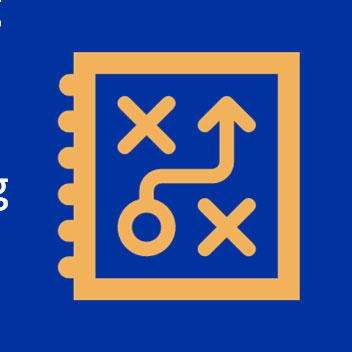

Example of unreasonable supportive measure
One student reports another student committed sexual assault three years ago when they were first years. The reporter has received strong academic marks since then. The reporter requests a refund of all tuition and housing charges for the last three years and a waiver of tuition and charges until the reporter completes graduate school.

Title IX & Sexual Harassment ResponseJuly 27, 2021 © 2021 Husch Blackwell LLP. All Rights Reserved.
2021 Husch Blackwell LLP
©
2021 Husch Blackwell LLP
©
63 64

Example of unreasonable supportive measure
Employee in maintenance department accuses supervisor of sexual harassment by way of making sexualized jokes and remarks. Employee requests to be on indefinite paid leave for the remaining six months of the academic year. Employee could easily be reassigned to work under a different supervisor in a different part of campus.
©


Do students and employees have other rights?

• Yes—other laws may trigger accommodations when a medical condition or disability is present
Americans with Disabilities Act
Family and Medical Leave Act
Section 504 of the Rehabilitation Act
©
Title IX & Sexual Harassment ResponseJuly 27, 2021 © 2021 Husch Blackwell LLP. All Rights Reserved.
2021 Husch Blackwell LLP
2021 Husch Blackwell LLP
65 66

Can supportive measures affect the respondent?
• Yes, but cannot create an unreasonable burden
• Cannot be a form of de facto discipline
• Supportive measures are not a substitute for the investigation and hearing process
©

Example of unreasonable burden
Student Worker accuses Colleague of sexual harassment. Institution imposes proximity restriction that prohibits Worker and Colleague from being within 400 meters of each other pending investigation and hearing.
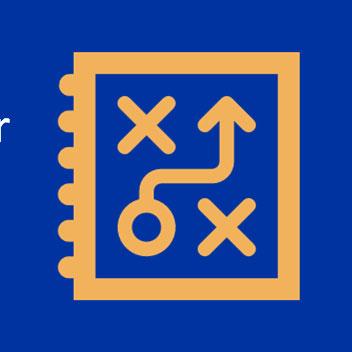
©
Title IX & Sexual Harassment ResponseJuly 27, 2021 © 2021 Husch Blackwell LLP. All Rights Reserved.
2021 Husch Blackwell LLP
2021 Husch Blackwell LLP
67 68

Example of disciplinary supportive measure
In‐State Student accuses Out‐of‐State Student of sexual assault. In‐State requests as a support measure that Out‐of‐State be removed from all shared classes, removed from shared dormitory and made to live off campus, and prohibited from being on campus after 5:00 pm.


Example of disciplinary supportive measure
Sophomore accuses Freshman of sexual harassment. Sophomore requests as a support measure that Freshman be prohibited from having any contact with, or being in proximity to, Sophomore for the duration of Sophomore’s time at the College.

Title IX & Sexual Harassment ResponseJuly 27, 2021 © 2021 Husch Blackwell LLP. All Rights Reserved.
2021 Husch Blackwell LLP
©
2021 Husch Blackwell LLP
©
69 70

Example scenario
Two students are admitted to institution as first years. Prior to arriving on campus, one reports that the other sexually harassed the reporting student when the two where sophomores in high school. The reporter wants counseling; safety escorts; and access to the respondent’s schedule so the reporter can avoid the respondent.


What if the report falls outside Title IX jurisdiction?
• Title IX requires supportive measures for reported sexual harassment covered by Title IX
• Institute mayprovide supportive measures for reported conduct that falls outside Title IX’s scope
©

Title IX & Sexual Harassment ResponseJuly 27, 2021 © 2021 Husch Blackwell LLP. All Rights Reserved.
2021 Husch Blackwell LLP
©
2021 Husch Blackwell LLP
71 72

Are supportive measures confidential?

• Generally, yes
• Only shared to the extent necessary to effectuate the purpose of the supportive measure
• Only shared with institutional employees who have a legitimate need to know
© 2021 Husch Blackwell LLP

Who is responsible for supportive measures?
• Title IX Coordinator is responsible for “coordinating the effective implementation”
• May be delegated with appropriate oversight
• Typically, a collaborative effort involving more than one institutional office or department

© 2021 Husch Blackwell LLP
Title IX & Sexual Harassment ResponseJuly 27, 2021 © 2021 Husch Blackwell LLP. All Rights Reserved.
73 74

Can we utilize interim removals or suspensions for students?
• Studentsmay be removed on emergency basis if:
Individualized safety and risk analysis
Determines an immediate threat to physical health or safety of any student or other individual arising from the alleged sexual harassment justifies removal
Student is given immediate notice and opportunity to contest the removal

Example of immediate threat to physical health or safety
Mechanic Student is reported to have raped Tech Student after providing Tech with a large quantity of heroin. Tech explains that Mechanic keeps heroin in Mechanic’s campus locker and is known to sell it to others. Tech explains that at least one other student has been sexually assaulted by Mechanic using this method.

©
Title IX & Sexual Harassment ResponseJuly 27, 2021 © 2021 Husch Blackwell LLP. All Rights Reserved.
2021 Husch Blackwell LLP
©
2021 Husch Blackwell LLP
75 76

Example of immediate threat to physical health or safety


Student reports that another slapped and beat the reporter when they broke up with the other student. The reporter says the respondent has since threatened to kill the reporter and anyone the reporter might date. The breakup occurred two days ago. The reporter has visible injuries. ©

Example of no immediate threat to physical health or safety
Engineering Student reports that Philosophy Student committed sexual assault by having sex with Engineer while Engineer was incapacitated after the two were drinking. The incident occurred two years ago. Philosopher has no disciplinary record. Engineer reports minimal but positive interactions with Philosopher since the incident.
Title IX & Sexual Harassment ResponseJuly 27, 2021 © 2021 Husch Blackwell LLP. All Rights Reserved.
© 2021 Husch Blackwell LLP
Husch Blackwell LLP
2021
77 78

Can we utilize an already existing process for interim removals?
• Yes, if that process complies with the Title IX standard.
• Common institutional examples include:
Threat assessment policy
Critical Incident Response Team (“CIRT”)
Interim suspension provisions of Student Handbook
©

Can we place employees on administrative leave?
• Yes –employeerespondents may be placed on administrative leave without requisite showing of threat to physical health or safety
• Whether an opportunity to challenge administrative leave must be given depends on employee status and other policies (e.g., Faculty Handbook)
©
Title IX & Sexual Harassment ResponseJuly 27, 2021 © 2021 Husch Blackwell LLP. All Rights Reserved.
2021 Husch Blackwell LLP
2021 Husch Blackwell LLP
79 80

Example of administrative leave


Example of administrative leave

Faculty member is accused of having sex in on‐campus office with Undergraduate Student currently in the faculty member’s class. Undergraduate alleges the encounter was non‐consensual. Faculty member admits to sex but denies it was coerced or otherwise non‐consensual. Institution temporarily suspends faculty member from teaching but continues pay and administrative duties. ©
Athletics department trainer is accused by multiple student athletes of unwelcome and unnecessary touching of genitals. Institution removes trainer from having any contact with student athletes pending investigation.
Title IX & Sexual Harassment ResponseJuly 27, 2021 © 2021 Husch Blackwell LLP. All Rights Reserved.
2021 Husch Blackwell LLP
©
2021 Husch Blackwell LLP
81 82

Future Oncologist and Future Psychiatrist are both in their third year of medical school. Oncologist reports that Psychiatrist sexually harassed Oncologist by repeatedly propositioning Oncologist at a school‐sponsored happy hour. Oncologist has not decided whether to file a formal complaint. Oncologist requests several supportive measures, including free counseling; the ability to complete the semester remotely; never to be in the same class or clinical rotation with Psychiatrist; and for Psychiatrist to participate in supplemental sexual harassment training and a substance abuse prevention program. Oncologist submits a doctor’s note indicating Oncologist suffers from anxiety and PTSD when in Psychiatrist’s presence. Unbeknownst to Oncologist, another student accused Psychiatrist of similar sexual harassment a year prior but did not make a formal complaint. The Dean reports that the school has never allowed a student in their third year to study remotely and that required in‐person experiences cannot be replicated remotely. The Dean also reports that, due to the small size of the class, it would be impossible to guaranty Oncologist and Psychiatrist would never be in the same class or clinical rotation.

Title IX & Sexual Harassment ResponseJuly 27, 2021 © 2021 Husch Blackwell LLP. All Rights Reserved.
© 2021 Husch Blackwell LLP
Blackwell LLP Questions ? 83 84
Group Scenario © 2021 Husch

The Investigation Process

What is the purpose of Title IX investigation?
• For the institution
• To collect relevant inculpatory and exculpatory evidence
• Sufficient to permit an impartial decision‐maker to determine through a live hearing
• Whether or not the reported sexual harassment occurred
Title IX & Sexual Harassment ResponseJuly 27, 2021 © 2021 Husch Blackwell LLP. All Rights Reserved.
© 2021 Husch Blackwell LLP
85 86

What are the general principles of an investigation?
• Parties must have sufficient notice to prepare and meaningfully participate
• Investigator has an independent duty to collect relevant inculpatory and exculpatory evidence
• Parties have an equal opportunity to present their statements, evidence, and to identify witnesses
• Parties have equal opportunity to review and comment on evidence developed
• Investigation is evidence‐gathering; not fact‐finding
©

What is a formal complaint?
• Signed writing
• From the alleged victim or the Title IX Coordinator;
• Alleging sexual harassment;
• Indicating desire to initiate the grievance process (i.e., investigation and hearing).
©
Title IX & Sexual Harassment ResponseJuly 27, 2021 © 2021 Husch Blackwell LLP. All Rights Reserved.
2021 Husch Blackwell LLP
2021 Husch Blackwell LLP
87 88

How do we tell the parties about an investigation?
• Institution must provide the parties written notice of a formal complaint that includes sufficient details about the “who, what, when, where, and how” beforeinvestigating

©

What else does the notice need to say?
• Written notice must also include:
Statement of presumption respondent is not responsible unless and until a determination is made at the end of the process
That parties have the right to an advisor of their choice
That parties have the right to inspect and review evidence
Any prohibition on providing knowingly false statements or information
Title IX & Sexual Harassment ResponseJuly 27, 2021 © 2021 Husch Blackwell LLP. All Rights Reserved.
2021 Husch Blackwell LLP
Blackwell LLP
© 2021 Husch
89 90



Can we gather any information prior to the written notice?
• Yes, but only to the extent necessary to determine how the case will proceed
• Typically, this “preliminary inquiry” would involve identifying the putative victim and understanding the scope of the allegations
• Information gathering that seeks to determine whether the allegations are true is investigatory and should await the written notice
Student accuses Employee of quid pro quo harassment. Prior to sending written notice, Title IX Coordinator appoints investigator who schedules interviews with Employee’s co‐workers. Only after these interviews are complete, does the investigator send a written notice to Employee. ©
Title IX & Sexual Harassment ResponseJuly 27, 2021 © 2021 Husch Blackwell LLP. All Rights Reserved.
2021 Husch Blackwell LLP
©
Example (incorrect)
2021 Husch Blackwell LLP
91 92

Example (preliminary inquiry)



Campus visitor reports that Student was sexually assaulted by another student. Investigator sends email to Student seeking to meet with Student to understand what happened and how Student wishes to proceed.
Student submits formal complaint via email with a single sentence reading, “Named Student sexually assaulted me.” Prior to sending a written notice, investigator meets with the complainant and asks for more specific information about what happened—the “who, what, when, where, and how.” ©
Title IX & Sexual Harassment ResponseJuly 27, 2021 © 2021 Husch Blackwell LLP. All Rights Reserved.
Blackwell LLP
© 2021 Husch
2021 Husch Blackwell LLP
Example (preliminary inquiry)
93 94

May we take steps to preserve information before sending the written notice?

• Yes, if the work isn’t investigatory and there is a legitimate concern information will be lost
Placing a “hold” on an email account
Asking IT to capture server‐level data

©
Having campus security suspend auto‐delete of security footage ©

Title IX & Sexual Harassment ResponseJuly 27, 2021 © 2021 Husch Blackwell LLP. All Rights Reserved.
2021
Blackwell LLP
Husch
2021 Husch Blackwell LLP
investigation? Interviews of parties and witnesses Collection of non‐testimonial evidence 95 96
How do we collect evidence in an
How do you structure an interview?



Rapport building/information providing phase
Substantive testimony collection
Closure/information providing phase
©

How do I ask questions in the substantive phase?
• Open‐ended and non‐suggestive invitations
• Use facilitator words to keep the narrative flowing
• Use cued‐invitations to expand particular topics
• Delay use of specific questions (“recognition prompts”) as long as possible
• Avoid suggestive or leading questions

© 2021 Husch Blackwell LLP
Title IX & Sexual Harassment ResponseJuly 27, 2021 © 2021 Husch Blackwell LLP. All Rights Reserved.
2021 Husch Blackwell LLP
97 98




“Please tell me what happened that night.”
“Can you walk me through what happened?”
“In your own words, tell me what occurred.”
“Can you tell me everything that happened after you got to the party?”
©
Examples of facilitators Facilitators
Examples of open invitations ©
Title IX & Sexual Harassment ResponseJuly 27, 2021 © 2021 Husch Blackwell LLP. All Rights Reserved.
2021 Husch Blackwell LLP
2021 Husch Blackwell LLP
“Ok” “Yes”
”
. .”
. . .”
‐huh” 99 100
“Go on
“I follow you .
“Okay
“Uh
Examples of cued invitations
“You mentioned that . . . . Can you tell me more?”
“You said they ‘coerced’ you. Can you tell me what they did?”
“You said that . . . . Can you elaborate?”
“If I understood you right, you said that after . . . . Can you tell me what happened in between?”
©
Examples of recognition prompts




“What did she say?” (directive)
“What day did that happen?” (directive)
“Did it hurt?” (option choosing)
“Was he slurring words?” (option choosing)
©
Title IX & Sexual Harassment ResponseJuly 27, 2021 © 2021 Husch Blackwell LLP. All Rights Reserved.
2021 Husch Blackwell LLP
2021 Husch Blackwell LLP
101 102

How do we make a record of the interview?
• Note‐taking and audio recording are both appropriate methods of making a record of the interview
• If the investigator takes notes, they should be used to create a coherent interview memorandum shortly after the interview while the interview is fresh in the investigator’s mind
• If the investigator records the interview, the investigator must be sure to clearly state on the record the time, place, date, and persons involved in the interview
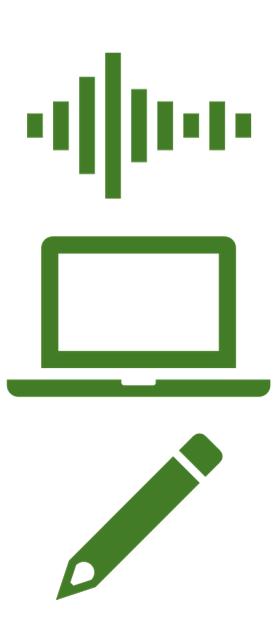
©
©
Title IX & Sexual Harassment ResponseJuly 27, 2021 © 2021 Husch Blackwell LLP. All Rights Reserved.
2021 Husch Blackwell LLP
2021 Husch Blackwell LLP The parties The witnesses Institutional email Video cameras Key card logs Timesheets Public social media Institution‐owned computers Institution‐owned personal devices Information on institutional servers Police Example sources of non-testimonial evidence 103 104

May an investigation collect evidence on sexual history?
• Generally, no –Evidence of a complainant’s prior sexual behavior is relevant only if offered to prove that someone other than the respondent committed the conduct, or if evidence of specific incidents of the complainant’s prior sexual behavior with the respondentare offered to prove consent
©

May an investigation collect and rely on privileged records?
• Only if a party waives the privilege

• An institution may not access information under a legally recognized privilege unless the holder of the privilege waives it
• Institution cannot unilaterally access its own counseling and health files for investigation purposes
©
Title IX & Sexual Harassment ResponseJuly 27, 2021 © 2021 Husch Blackwell LLP. All Rights Reserved.
2021 Husch Blackwell LLP
2021 Husch Blackwell LLP
105 106

Example of permissible use
Student who makes report of sexual assault executes release allowing disclosure of counseling records demonstrating student sought an emergency counseling session the morning after the alleged sexual assault


Example of impermissible use

Employee accuses Student of sexual assault and reports that Student transmitted an STD. Student denies sexual encounter occurred. Investigator unilaterally contacts student health center seeking records to determine whether Student has been treated for STD.
©
Title IX & Sexual Harassment ResponseJuly 27, 2021 © 2021 Husch Blackwell LLP. All Rights Reserved.
2021 Husch Blackwell LLP
©
2021 Husch Blackwell LLP
107 108

Do the parties have access to the evidence?
• Parties must be given access to all inculpatory and exculpatory evidence directly related to the allegations (regardless of whether the institution intends to rely on it) at least 10 days before the investigation report is finalized
• Evidence must be provided to a party and their advisor in physical copy or electronically
• Any earlier access to the evidence must be provided equally

What exactly has to be shared?
• Anything that has “evidentiary” value
• That is, the information is potentially inculpatory or exculpatory in light of the allegations at issue; or is otherwise potentially relevant
• E.g., witness statements; interview transcripts; text messages; social media posts; photographs; etc.
• Logistical communications; calendar invites; support measure communications generally are notshared
©
Title IX & Sexual Harassment ResponseJuly 27, 2021 © 2021 Husch Blackwell LLP. All Rights Reserved.
2021 Husch Blackwell LLP
©
2021 Husch Blackwell LLP
109 110


Transcript of interview with complainant contains 10 minutes of initial discussion about complainant’s supportive measures and access to counseling. Investigator redacts this portion of the transcript before sharing with the parties.


Investigator had 12 emails with respondent and advisor attempting to negotiate a time and place for interview. Investigator excludes the 12 emails from the evidence made available to the parties.
Title IX & Sexual Harassment ResponseJuly 27, 2021 © 2021 Husch Blackwell LLP. All Rights Reserved.
© 2021 Husch Blackwell LLP Example
© 2021 Husch Blackwell LLP Example
111 112

Do the parties get to respond to the evidence?
• Yes –after they review the evidence provided at least 10 days prior to issuance of the investigation report, parties can provide written responses
• Depending on written responses, additional investigation may be needed

Example (permissible)

• Investigator should consider the written responses in drafting final language of investigation report ©
After completing all interviews, investigator uploads interview transcripts and other evidence to a secure file sharing program and sends individual links and passwords to each party and their advisor.
Title IX & Sexual Harassment ResponseJuly 27, 2021 © 2021 Husch Blackwell LLP. All Rights Reserved.
2021 Husch Blackwell LLP
©
2021 Husch Blackwell LLP
113 114

Example (impermissible)


How is the investigation concluded?
• Issuance of a written investigation report
• Must fairly summarize the evidence collected, including both inculpatory and exculpatory evidence
• Must be provided to each party and their advisor at least 10 days prior to any hearing
After completing all interviews, investigator prints the evidence and tells parties they can schedule a time to review it in a conference room without cell phones. They are not allowed to take the evidence outside the room. ©
Title IX & Sexual Harassment ResponseJuly 27, 2021 © 2021 Husch Blackwell LLP. All Rights Reserved.
2021 Husch Blackwell LLP
©
2021 Husch Blackwell LLP
115 116

Does the investigation report make findings?
• No –the investigation report fairly summarizes the relevant inculpatory and exculpatory evidence collected during the investigation
• Under the new Title IX regulations, factual findings and determinations of policy violations are made by a decision‐maker at a subsequent hearing
©

Do the parties get to comment on the investigation report?
• Yes
• Parties are permitted to “review” and provide “written response” to investigation report

©
Title IX & Sexual Harassment ResponseJuly 27, 2021 © 2021 Husch Blackwell LLP. All Rights Reserved.
2021 Husch Blackwell LLP
2021 Husch Blackwell LLP
117 118

May parties have an advisor during the investigation?
• Yes –parties may be accompanied to any investigative interviews and meetings by an advisor of their choice
• Advisor may be an attorney, but does not have to be
• Institution may confine advisor to a passive role during the investigation phase

Example
• Institution is not required to provide an advisor during the investigation phase ©

The institution sends a written notice of investigation to respondent requesting an interview. The advisor (an attorney) responds and indicates respondent will not submit to an interview. The advisor submits a legal brief seeking “dismissal” of the complaint and giving the respondent’s factual narrative. The document is on law firm letterhead and signed only by the advisor.

Title IX & Sexual Harassment ResponseJuly 27, 2021 © 2021 Husch Blackwell LLP. All Rights Reserved.
2021 Husch Blackwell LLP
©
2021 Husch Blackwell LLP
119 120

Example
A complainant identifies a sexual assault victim advocate as advisor. The advocate indicates by email complainant will only respond to written questions that are pre‐screened by the advocate and revised, as necessary, so as not to re‐traumatize the complainant. Advocate tells investigator not to communicate with complainant directly.
©


Student athlete accuses teammate of sexual harassment after teammate kisses student athlete in a hotel room at an out‐of‐season summer tournament in which some team members are playing with coach’s encouragement. Teammate does not respond to investigator’s written request for interview. Eventually, attorney for teammate sends letter to investigator indicating teammate will not submit to interview and demanding complaint be dismissed because the incident occurred outside Title IX jurisdiction.
After investigator completes other interviews and makes the evidence available, teammate’s attorney sends a signed declaration from teammate disputing the allegations and accusing student athlete of falsifying the complaint. The teammate’s attorney also identifies six student athletes who teammate wants interviewed, three of whom will purportedly testify to the complainant’s general predisposition to be untruthful. Group
©
Title IX & Sexual Harassment ResponseJuly 27, 2021 © 2021 Husch Blackwell LLP. All Rights Reserved.
2021 Husch Blackwell LLP
2021 Husch Blackwell LLP
121 122
Scenario


The Hearing Process
Title IX & Sexual Harassment ResponseJuly 27, 2021 © 2021 Husch Blackwell LLP. All Rights Reserved. © 2021 Husch Blackwell LLP
Questions ?
123 124

What is the purpose of the hearing?
• To hear testimony and receive non‐testimonial evidence so that
• The decision‐maker can determine facts under a standard of evidence
• Apply those facts to the policy, and
• Issue a written determination resolving the formal complaint and imposing discipline/remedial measures as necessary
©

Who is the “decision-maker”?

• A single hearing officer; or
• A hearing panel led by a chair
Title IX & Sexual Harassment ResponseJuly 27, 2021 © 2021 Husch Blackwell LLP. All Rights Reserved.
2021 Husch Blackwell LLP
Husch Blackwell LLP
© 2021
125 126

What standard of evidence can be used?
• Either
Preponderance of the evidence or
Clear and convincing evidence
• Institution must select a standard and apply it uniformly in all cases, regardless of the identity of the respondent
©

What happens before the hearing?
• Parties are provided the final investigation report at least 10 days prior to the hearing
• “Decision‐maker” must be identified and clear conflicts of interest assessment
• Hearing must be scheduled and logistics arranged
• Witnesses must be notified
• Pre‐hearing conference should be held
©
Title IX & Sexual Harassment ResponseJuly 27, 2021 © 2021 Husch Blackwell LLP. All Rights Reserved.
2021 Husch Blackwell LLP
2021 Husch Blackwell LLP
127 128

What is a conflict of interest?
• A material connection to a dispute, the parties involved, or a witness, such that a reasonable person would question the individual’s ability to be impartial
• May be based on prior relationship; professional interest; financial interest; prior involvement in a matter; or nature of position

The University hires an outside attorney to serve as a hearing officer.
The outside attorney currently represents the respondent’s father in a personal injury lawsuit.

Title IX & Sexual Harassment ResponseJuly 27, 2021 © 2021 Husch Blackwell LLP. All Rights Reserved.
2021 Husch Blackwell LLP
©
Blackwell LLP
© 2021 Husch
Example
129 130

Example
The College assigns a faculty member to serve on a hearing panel. The faculty member previously wrote a glowing letter of recommendation for the complainant and has recently advised the complainant on graduate school applications.

©

How do we schedule a hearing?
• Set aside sufficient time considering the nature and complexity of the case
• Consider class and work schedules of parties and key witnesses to avoid conflicts
• Consider pre‐scheduling a backup or “spill over” date in the event the hearing runs long or must be continued
• Provide letters excusing parties and witnesses from other obligations, as necessary
© 2021 Husch Blackwell LLP
Title IX & Sexual Harassment ResponseJuly 27, 2021 © 2021 Husch Blackwell LLP. All Rights Reserved.
2021 Husch Blackwell LLP
131 132

How do we notify parties and witnesses?
• Institution must provide written notice to the parties of time and place of hearing
• Institution should provide written notice to witnesses requesting their presence

Example
Based on investigation report and in consultation with the parties, hearing officer issued letters to 8 witnesses advising them of the hearing date and time and requesting their presence at the identified location.
• Notice may be issued by the decision‐maker or another institutional official in coordination with decision‐maker ©

Title IX & Sexual Harassment ResponseJuly 27, 2021 © 2021 Husch Blackwell LLP. All Rights Reserved.
2021 Husch Blackwell LLP
©
2021 Husch Blackwell LLP
133 134

What is a pre-hearing conference?
• A meeting with the parties, decision‐maker, and other necessary officials to:
Address logistical issues and concerns
Discuss the sequence of the hearing and rules of decorum
Hear and resolve objections or concerns that can be addressed in advance
Take up other issues that will ensure hearing time is focused on testimony
©

When should a pre-hearing conference be held?
• Any time after the final investigation report is issued;
• The decision‐maker is identified; and
• Sufficient time exists to address issues raised in the pre‐hearing conference beforethe hearing actually occurs
©
Title IX & Sexual Harassment ResponseJuly 27, 2021 © 2021 Husch Blackwell LLP. All Rights Reserved.
2021 Husch Blackwell LLP
2021 Husch Blackwell LLP
135 136

Example
The investigation report issues, the institution identifies the hearing officer, and a hearing is scheduled to take place in 14 days. The institution schedules a pre‐hearing conference 3 days before the hearing is set to occur.

©

What are other considerations?
• The pre‐hearing conference can be two separate meetings—one with each party and advisor; but follow up notification may be required
• The pre‐hearing conference can be conducted virtually
• Advisors should be allowed to attend although their role can still be passive if the institution desires
• The pre‐hearing conference is not required but is a best practice that facilitates a smooth hearing
©
Title IX & Sexual Harassment ResponseJuly 27, 2021 © 2021 Husch Blackwell LLP. All Rights Reserved.
Husch Blackwell LLP
2021
Blackwell LLP
2021 Husch
137 138
How does the hearing actually work?
• Title IX regulation is largely silent on specific elements
• Required elements include:
Decision‐maker(s) must independently evaluate questions for relevance and resolve relevancy objections
Party’s advisors must be allowed to conduct live questioning of other party and witnesses
Party or witness who refuses to submit to live questioning from other party’s advisor must have their testimony excluded
©
Questioning of sexual history generally not permitted
What is a potential sequence?
Statement and questioning of complainant
Statement and questioning of respondent
Questioning of witnesses
©
Title IX & Sexual Harassment ResponseJuly 27, 2021 © 2021 Husch Blackwell LLP. All Rights Reserved.
2021 Husch Blackwell LLP
2021 Husch Blackwell LLP
Closing statement by complainant Closing statement by respondent 139 140
How might questioning of parties take place?
Party should be allowed to give a narrative first
Followed by questioning, including cross‐examination, by advisor for other party
Followed by questioning from decision‐maker(s)
©
How might questioning of witnesses take place?
Witness is first questioned by the decision‐maker(s)
Followed by questioning, including cross‐examination, from advisor for complainant
© 2021 Husch Blackwell LLP
Followed by questioning, including cross‐examination, from advisor for respondent
Title IX & Sexual Harassment ResponseJuly 27, 2021 © 2021 Husch Blackwell LLP. All Rights Reserved.
2021 Husch Blackwell LLP
141 142

Is an advisor allowed to question their own party?

• Not unless the institution chooses to allow it
• The Title IX regulation requires cross‐examination, but not “direct” examination
© 2021 Husch Blackwell LLP

Who determines relevance?
• Decision‐maker(s) must screen questions for relevance and resolve relevance objections
• Decision‐maker(s) must explain any decision to exclude a question as not‐relevant
© 2021 Husch Blackwell LLP
Title IX & Sexual Harassment ResponseJuly 27, 2021 © 2021 Husch Blackwell LLP. All Rights Reserved.
143 144

What is relevance?
Evidence is relevant if:
It has a tendency to make a factmore or less probable than it would be without the evidence; and

Example (relevant)
Student has accused another student of dating violence by way of slapping Student. Advisor for respondent asks complainant how many dates complainant and respondent went on before the slapping incident.
The fact is of consequencein determining the action ©
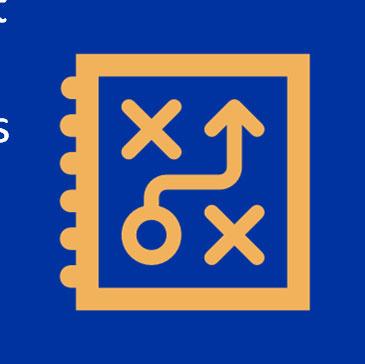
Title IX & Sexual Harassment ResponseJuly 27, 2021 © 2021 Husch Blackwell LLP. All Rights Reserved.
2021 Husch Blackwell LLP
©
2021 Husch Blackwell LLP
145 146

Example (relevant)

Faculty member is accused of engaging in quid pro quo harassment by rounding up a student’s final grade in exchange for a sexual favor. Complainant’s advisor asks faculty member whether he rounded up any other student’s grade.

Example (not relevant)
Employee accuses another employee of sexual harassment by telling sexual jokes in the workplace. Advisor for complainant asks respondent whether respondent had an affair with a co‐worker three years prior.

Title IX & Sexual Harassment ResponseJuly 27, 2021 © 2021 Husch Blackwell LLP. All Rights Reserved.
2021 Husch Blackwell LLP
©
2021 Husch Blackwell LLP
©
147 148

Is sexual history considered?
• Generally, no –Evidence of a complainant’s prior sexual behavior is relevant only if:
Offered to prove that someone other than the respondent committed the conduct, or

Example (impermissible)
Student has accused another student of sexual assault by incapacitation. Advisor for respondent asks complainant how many times complainant has had “drunk sex” with other persons.
If evidence of specific incidents of the complainant’s prior sexual behavior with the respondentare offered to prove consent ©

Title IX & Sexual Harassment ResponseJuly 27, 2021 © 2021 Husch Blackwell LLP. All Rights Reserved.
2021 Husch Blackwell LLP
©
2021 Husch Blackwell LLP
149 150

Example (permissible)


Does any testimony get excluded?
• Yes –Decision‐maker(s) must exclude the statements of any party or witness who refuses to submit to cross‐examination from the other party’s advisor
Student has accused another student of sexual assault by way of incapacitation. Advisor for respondent asks complainant whether complainant had any other sexual encounters with respondent when they were drunk. ©

Title IX & Sexual Harassment ResponseJuly 27, 2021 © 2021 Husch Blackwell LLP. All Rights Reserved.
Blackwell LLP
© 2021 Husch
LLP
2021 Husch Blackwell
151 152



Witness gives testimony in support of complainant’s account that respondent sexually assaulted complainant. When advisor for respondent seeks to cross‐examine witness about a long‐standing grudge witness holds against respondent, witness refuses to answer questions. ©

During hearing, respondent seeks to “introduce into evidence” an email respondent obtained from witness stating that “respondent could not have committed sexual assault because they were with me at that time in a different town.” Witness is not present at the hearing.
Title IX & Sexual Harassment ResponseJuly 27, 2021 © 2021 Husch Blackwell LLP. All Rights Reserved.
Blackwell LLP
© 2021 Husch
Example (excluded)
2021 Husch Blackwell LLP
Example (excluded)
153 154

Are there any exceptions to the exclusionary rule?
• Generally, “no.”
• Various hearsay exceptions set forth in civil rules of evidence do not apply


• If the alleged harassment itself is a verbal or written statement, it may be considered ©

Example (not excluded)
During hearing, complainant identifies a text message from the respondent, sent to the complainant, calling the complainant a sexual epithet. The respondent refuses to submit to cross‐examination. The respondent’s text message is still considered.
Title IX & Sexual Harassment ResponseJuly 27, 2021 © 2021 Husch Blackwell LLP. All Rights Reserved.
2021 Husch Blackwell LLP
©
2021 Husch Blackwell LLP
155 156

Example (excluded)


Is an advisor required to ask questions a party wants asked?
• Advisors should consult with their party and consider their preferences for what questions to ask
• But an advisor must exercise their own reasonable judgment and is never required to ask questions that the advisor knows are improper (e.g., invade sexual history)
• An advisor may consult the decision‐maker if a party demands the advisor ask a question that advisor is uncertain is appropriate
During hearing, respondent identifies text message sent to respondent by complainant’s friend indicating “complainant admitted to me they made it up.” Friend refuses to attend hearing. Text message is excluded. ©
Title IX & Sexual Harassment ResponseJuly 27, 2021 © 2021 Husch Blackwell LLP. All Rights Reserved.
2021 Husch Blackwell LLP
©
2021 Husch Blackwell LLP
157 158

Can we have standards of decorum for hearings?
Yes, provided they are applied equally and do not violate explicit guarantees from the Title IX regulation.
©

Example (permissible)

Institution’s hearing procedures require all participants to remain seated during the hearing and to remain silent when another party is testifying or engaging in cross‐examination except to succinctly raise an objection.
©
Title IX & Sexual Harassment ResponseJuly 27, 2021 © 2021 Husch Blackwell LLP. All Rights Reserved.
2021 Husch Blackwell LLP
2021 Husch Blackwell LLP
159 160

Example (impermissible;
too broad)
Institution’s policy prohibits a party or advisor from “doing anything that would make another party feel intimidated, re‐traumatized, or attacked in any way.”


Are there “objections” at hearings?
• Minimally, the institution must allow a party to raise an objection that evidence is not relevant or should be specifically excluded (e.g., sexual history; confidential privilege)
• Institution may permit other objections to be raised
• Institution may limit the right of objection to a party
Title IX & Sexual Harassment ResponseJuly 27, 2021 © 2021 Husch Blackwell LLP. All Rights Reserved.
Blackwell LLP
© 2021 Husch
LLP
© 2021 Husch Blackwell
161 162

How long does a hearing last?

• Decision‐maker(s) have the ability to set reasonable time limits on the hearing and its constituent parts
• Parties must have a reasonable opportunity to conduct questioning/ cross‐examination, but do not have the right to question/cross‐examine witnesses as long as they want

Example
In a case involving two parties and four witnesses, hearing officer budgets four hours of time for the hearing—one hour for each party to testify and be cross‐examined and two hours total for the four witnesses.

Title IX & Sexual Harassment ResponseJuly 27, 2021 © 2021 Husch Blackwell LLP. All Rights Reserved. © 2021 Husch Blackwell LLP
2021 Husch Blackwell LLP
©
163 164

Can we delay or “continue” a hearing once it starts?
• Yes, but only if a delay is not clearly unreasonable
• Consider pre‐scheduling an alternative date
• Inconvenience alone should not be the determinative factor; every date will inconvenience someone

How do(es) the decision-maker(s) decide a case?




After hearing, decision‐maker(s) must deliberate and consider all the admissible testimony and admissible non‐testimonial evidence
Evaluate evidence for weight and credibility
Resolve disputed issues of fact under the standard of evidence adopted by the institution
Using the facts as found, apply the policy’s definitions to those facts to determine whether sexual harassment occurred
© 2021
Title IX & Sexual Harassment ResponseJuly 27, 2021 © 2021 Husch Blackwell LLP. All Rights Reserved.
Blackwell LLP
© 2021 Husch
Husch Blackwell LLP
165 166

How do(es) the decision-maker(s) issue a decision?
• In a written document, provided contemporaneously to the parties that:
Identifies the allegations of sexual harassment
Describes the various procedural steps taken from the time the formal complaint was made
States findings of facts supporting the determination
Reaches conclusions regarding application of relevant policy definitions to the facts
Includes a rationale for each finding for each allegation
States the disciplinary sanctions and remedies, if implicated by the determination made, and
Explains the procedures and grounds for appeal

Who determines discipline and remediation?
• Some institutions will have the decision‐maker(s) also impose discipline
• Others may refer a disciplinary authority with jurisdiction over the respondent (i.e., Dean of Students, Provost, Director of Human Resources, etc.)
• If referred to someone else, that must occur before the written determination is issued
Title IX & Sexual Harassment ResponseJuly 27, 2021 © 2021 Husch Blackwell LLP. All Rights Reserved.
© 2021 Husch Blackwell LLP
© 2021 Husch Blackwell LLP
167 168
What are the grounds for appeal?
Title IX regulation requires the following permitted grounds:



Procedural irregularity that affected the outcome of the matter
New evidence that was not reasonably available at the time of the determination regarding responsibility or dismissal was made, that could affect the outcome of the matter; or
©

Respondent is accused of sexually harassing a minor at a sports camp. Institution utilizes a single hearing officer. In advance of the hearing, institution provides the hearing officer a copy of the investigation report and all evidence disclosed to the parties, including witness statements. At the hearing, the investigator testifies briefly about the nature of the formal complaint and the timing of various stages of the investigation. Advisor for the respondent then seeks to cross‐examine the investigator about specific questions investigator asked or did not ask in interviews. The hearing officer rules the questioning irrelevant. When complainant is cross‐examined by respondent’s advisor, complainant takes long pauses and asks for several breaks before answering questions. The hearing officer permits this. Later, advisor for the complainant seeks to cross‐examine respondent about whether respondent has been diagnosed with pedophilia. The respondent refuses to answer. Three witnesses who gave statements in the investigation do not appear at the hearing.
©
Title IX & Sexual Harassment ResponseJuly 27, 2021 © 2021 Husch Blackwell LLP. All Rights Reserved.
2021 Husch Blackwell LLP
Title IX Coordinator, investigator, or decision‐maker (hearing official) had a conflict of interest or bias against complainants or respondents generally or the individual complainant or respondent that affected the outcome of the matter
2021 Husch Blackwell LLP
169 170
Group Scenario


Alternative and Parallel Processes
Title IX & Sexual Harassment ResponseJuly 27, 2021 © 2021 Husch Blackwell LLP. All Rights Reserved. © 2021 Husch Blackwell LLP
Questions ?
171 172

What is informal resolution?
A voluntary process to resolve formal complaints of sexual harassment through a mechanism other than the default investigation and hearing.
© 2021 Husch Blackwell LLP
What are the key concepts of informal resolution?

A formal complaint must first have been filed and written notice given to the parties

The parties must voluntarily agree to participate in writing

The parties must be apprised in writing of how the informal resolution process will work and the consequences of participating in it

© 2021 Husch Blackwell LLP
The parties must be allowed to withdraw from informal resolution up until the point it is final
Title IX & Sexual Harassment ResponseJuly 27, 2021 © 2021 Husch Blackwell LLP. All Rights Reserved.
173 174

Example


What are the limitations?
• Informal resolution cannot be used where an employee is accused of sexually harassing a student
• Informal resolution cannot be used in the absence of a formal complaint
• Institution cannot require persons to consent to informal resolution as a condition of employment or enrollment
Parties agree to engage in informal resolution in the form of separate meetings with the College’s ombudsperson in an attempt to reach an agreement regarding their future interaction. A written agreement is eventually reached and signed by both parties. ©

Title IX & Sexual Harassment ResponseJuly 27, 2021 © 2021 Husch Blackwell LLP. All Rights Reserved.
2021 Husch Blackwell LLP
©
2021 Husch Blackwell LLP
175 176

Example (impermissible)
Student files a formal complaint accusing a faculty member of groping the student during a clinical experience. As the hearing approaches, the student decides not to participate in the hearing and requests that the matter be resolved by the faculty member apologizing. Faculty member apologizes and matter is closed “by agreement.”


When maya case be dismissed?
• Complainant withdraws allegations in writing
• Respondent is no longer employed or is no longer a student
• Specific circumstances prevent the institution from gathering evidence sufficient to reach a determination
Title IX & Sexual Harassment ResponseJuly 27, 2021 © 2021 Husch Blackwell LLP. All Rights Reserved.
2021 Husch Blackwell LLP
©
2021 Husch Blackwell LLP
©
177 178

Who facilitates an informal resolution?
• Any suitably qualified and trained person may facilitate informal resolution, including the Title IX Coordinator
• Facilitator can be a third‐party mediator or alternative dispute resolution specialist
• Default rules on conflicts of interest and bias apply
©

How long can an informal resolution take?
• Informal resolution should be reasonably prompt
• Typically has the effect of suspending any default investigation and hearing process
• If informal resolution fails or appears futile, institution should promptly resume default investigation and hearing process
©
Title IX & Sexual Harassment ResponseJuly 27, 2021 © 2021 Husch Blackwell LLP. All Rights Reserved.
2021 Husch Blackwell LLP
2021 Husch Blackwell LLP
179 180

• It depends upon the terms of the informal resolution

Example
Informal resolution indicates that, in lieu of investigation and hearing, respondent will apologize for respondent’s conduct and avoid future communication with complainant. Agreement states that, if respondent violates informal resolution, respondent will be subject to discipline under Student Code of Conduct but formal Title IX complaint is resolved and closed.
• Title IX Coordinator should ensure that any informal resolution clearly resolves this question ©


Title IX & Sexual Harassment ResponseJuly 27, 2021 © 2021 Husch Blackwell LLP. All Rights Reserved.
2021 Husch Blackwell LLP
©
Can a case that is resolved informally be “reopened”?
2021 Husch Blackwell LLP
181 182

How is an informal resolution documented?
• Agreements should be well‐documented by the informal resolution facilitator
• Ideally, parties will sign the agreement or provide some other form of written confirmation
• Formal settlement agreements are typically not required unless they are resolving legal claims that have been asserted
©

Is Title IX the exclusive process for resolving sexual misconduct?

• No
• Title IX does not preclude the use of other policies and processes that may be implicated by a report of sexual misconduct
©
Title IX & Sexual Harassment ResponseJuly 27, 2021 © 2021 Husch Blackwell LLP. All Rights Reserved.
Blackwell LLP
2021 Husch
Husch Blackwell LLP
2021
183 184

What other policies/processes may apply?
• Title VII policy
• Consensual relationships policy
• Professionalism policies
• Student code of conduct
• Threat assessment
• Employee handbook provisions
• Faculty handbook provisions
• Contractual provisions
©

May we use another process before Title IX?
• Yes
• Some processes do not require a formal complaint and may be initiated prior to Title IX
• Other policy violations may be apparent prior to Title IX
©
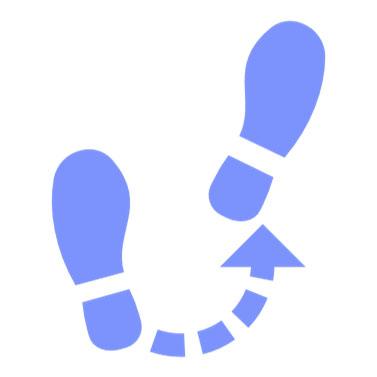
Title IX & Sexual Harassment ResponseJuly 27, 2021 © 2021 Husch Blackwell LLP. All Rights Reserved.
Husch Blackwell LLP
2021
Husch Blackwell LLP
2021
185 186

Student makes a verbal report that resident director provided alcohol to underage Student and then attempted to grope Student before Student fled the room. Resident director admits to providing alcohol but denies any attempted groping.


Volleyball Player files a formal Title IX complaint accusing Student Team Manager of punching and kicking Player to the point of leaving bruises. Manager admits to punching and kicking Player but denies there is a dating relationship.
©

Title IX & Sexual Harassment ResponseJuly 27, 2021 © 2021 Husch Blackwell LLP. All Rights Reserved.
2021 Husch Blackwell LLP
©
Example
2021
Blackwell LLP
Husch
Example
187 188

May we use another process after Title IX?
• Yes
• Some conduct may not violate Title IX standards but will violate other standards
• Some conduct may merit additional punishment beyond what is merited by Title IX policy


Example
Medical Student accuses Physical Therapy Student of sexual assault after Physical Therapy Student rendered Medical Student incapacitated by providing Medical Student with illegal drugs. Title IX hearing officer concludes Physical Therapy Student provided Medical Student illegal drugs but that Medical Student was not incapacitated.
©

Title IX & Sexual Harassment ResponseJuly 27, 2021 © 2021 Husch Blackwell LLP. All Rights Reserved.
2021 Husch Blackwell LLP
©
2021 Husch Blackwell LLP
189 190

Example
Employee is accused of hostile environment sexual harassment.
Title IX process results in a “no violation” finding because harassment is not pervasive.
Institution then initiates process under Title VII policy contending that harassment is severe.

©

May we use two processes at the same time?

• Yes
• Title IX permits other process to run concurrently
• Important to be clear to parties involved what is happening and how processes differ
©
Title IX & Sexual Harassment ResponseJuly 27, 2021 © 2021 Husch Blackwell LLP. All Rights Reserved.
2021 Husch Blackwell LLP
2021 Husch Blackwell LLP
191 192

Example
Math faculty member at religious institution is accused of sexually harassing students by requiring them to read sexualized and satirical accounts of Biblical events. Institution initiates a Title IX process as well as discipline process under faculty handbook for actions seriously undermining religious mission of institution.


May we conduct a “joint” investigation?
• Yes
• But any “joint” investigation must satisfy the Title IX standards
• Important to be clear to the parties what is going on
• Important to maintain integrity of Title IX evidence

©
Title IX & Sexual Harassment ResponseJuly 27, 2021 © 2021 Husch Blackwell LLP. All Rights Reserved.
2021 Husch Blackwell LLP
©
2021 Husch Blackwell LLP
193 194

Employee is accused of sexually harassing a co‐worker. Institution initiates a Title VII investigation and a Title IX investigation. Title IX investigator and Title VII investigator conduct joint interviews of parties and witnesses.


Example
Male respondent at private religious college is accused of sexually assaulting female complainant in a female‐only dorm. Respondent has two previous conduct charges for entering female‐only dorms after hours. Based on respondent’s admission that he entered female dorm after hours, even though he denies sexual contact, institution dismisses respondent under its “three strikes your out” conduct provision.

Title IX & Sexual Harassment ResponseJuly 27, 2021 © 2021 Husch Blackwell LLP. All Rights Reserved.
Blackwell LLP
© 2021 Husch
Example
Blackwell LLP
© 2021 Husch
195 196

Student complains that Graduate Assistant harassed Student by sending Student an email with a pornographic video attached from GA’s University laptop. GA claims the video was sent to Student by accident; Student’s email account was close to the intended recipient’s email account, which was mistyped. Institution terminates GA for violating institutional prohibition on accessing pornography from institutional computers.


Why would an institution continue with a Title IX process after respondent departure?
• Complainant’s wishes
• Desire to avoid “passing the harasser” scenario
• Community expectation
• Large investment of time and resources to date
• Potential for respondent’s return in the future
• Other factors possible
Title IX & Sexual Harassment ResponseJuly 27, 2021 © 2021 Husch Blackwell LLP. All Rights Reserved. © 2021 Husch Blackwell LLP
Example
2021 Husch Blackwell LLP
©
197 198

Can we use another process to make the same finding we would otherwise make under Title IX policy?

• No
• Title IX regulation requires the use of specific Title IX process for any “sexual harassment” as defined by Title IX that occurs in institution’s programs and activities

Example (impermissible)
Alpha AlphaStudent files formal Title IX complaint against Mu MuStudent alleging that Mu raped Alpha in a Greek house by having non‐consensual vaginal sex. Alpha does not want to participate in a hearing, so institution dismisses Title IX case and re‐charges Mu with rape by way of non‐consensual vaginal sex under student code of conduct.

©
Title IX & Sexual Harassment ResponseJuly 27, 2021 © 2021 Husch Blackwell LLP. All Rights Reserved.
2021 Husch Blackwell LLP
©
2021 Husch Blackwell LLP
199 200

Example
Dorm Resident files formal Title IX complaint against Student Security Officer alleging that Officer engaged in sexual harassment by masturbating in the hallway outside Resident’s room. Resident withdraws Title IX complaint to avoid being cross‐examined at hearing. Institution then charges Officer with lewd conduct under student code of conduct, which does not use a hearing process.

Group Scenario

Junior Student files sexual harassment complaint alleging that Senior Student broke down the door to Junior’s dorm room while high on drugs, took off Senior’s own clothes, and attempted to get in bed with Junior while naked. As Title IX investigation proceeds, Junior indicates a desire for informal resolution of the sexual harassment complaint if Senior will apologize and agree to treatment. Senior agrees, and the Title IX complaint is closed. Unbeknownst to Junior, Senior has one prior conduct charge for illegal drug use and was previously reported to have sexually harassed another student while drunk. Concerned about the continuing risk Senior may pose, and after the Title IX complaint is closed, institution charges Senior under its conduct code for illegal drug use; damaging institutional property; lewd conduct; and invasion of privacy. The institution’s conduct code does not use a hearing model. The institution finds Senior in violation of its code based on Junior’s statement and the statements of other witnesses that were made in the Title IX case before it was resolved. Senior accuses the institution of a “bait and switch.”
Title IX & Sexual Harassment ResponseJuly 27, 2021 © 2021 Husch Blackwell LLP. All Rights Reserved.
© 2021 Husch Blackwell LLP
© 2021 Husch Blackwell LLP
201 202


Title IX & Sexual Harassment ResponseJuly 27, 2021 © 2021 Husch Blackwell LLP. All Rights Reserved. © 2021 Husch Blackwell LLP Questions ? Regulatory and Caselaw Update 203 204

Have the Title IX regulations been rescinded?
• No
• The 2021 Title IX regulations remain in effect and institutions must continue to abide by them
• Court challenges to the regulations have been unsuccessful (to date)
• Current administration cannot rescind or alter regulations without rulemaking process
©

Will the Title IX regulations be rescinded?
• Changesare likely but wholesale rescission is not
• ED is currently engaged in a “comprehensive review” of Title IX regulations
Internal review of regulations and guidance
Public hearings with comments and feedback from stakeholders
• Any changes likely will not take effect until 2022‐2023 academic year at the earliest
©
Title IX & Sexual Harassment ResponseJuly 27, 2021 © 2021 Husch Blackwell LLP. All Rights Reserved.
2021 Husch Blackwell LLP
2021 Husch Blackwell LLP
205 206

Is there guidance in the interim?
• Yes
• July 2021 ED Q&A document on Title IX sexual harassment guidance
• Q&A articulates ED’s interpretation of existing regulations and does not have the force and effect of law
• Includes sample language for key policy provisions
©

Are there key points from the Q&A? (1 of 5)
• Regulatory application
Regulations apply to sexual harassment occurring on or after August 14, 2021
Sexual harassment in online/virtual operations of an institution is covered by Title IX
A school’s Title IX obligations continued despite COVID‐19
©
Title IX & Sexual Harassment ResponseJuly 27, 2021 © 2021 Husch Blackwell LLP. All Rights Reserved.
2021 Husch Blackwell LLP
2021 Husch Blackwell LLP
207 208

Are there key points from the Q&A? (2 of 5)
• Combatting sexual harassment
Schools should take steps to affirmatively prevent sexual harassment in addition to the grievance process
Schools can take additional steps to combat sexual harassment as long as those steps don’t conflict with regulations
©

Are there key points from the Q&A? (3 of 5)
• Other policies
Schools may address conduct that falls outside the scope of the regulations through other policies
A school may use its code of conduct to address sexual harassment where the complainant is not a participant at the time the complaint is filed
Forms of sex discrimination other than sexual harassment are not covered by the sexual harassment regulations and may be resolved through a different process that is prompt and equitable
©
Title IX & Sexual Harassment ResponseJuly 27, 2021 © 2021 Husch Blackwell LLP. All Rights Reserved.
2021 Husch Blackwell LLP
2021 Husch Blackwell LLP
209 210

Are there key points from the Q&A? (4 of 5)
• Process
A school may use a “trauma‐informed” approach as long as it does not adopt improper presumptions or stereotypes
Presumption of no responsibility does not mean a presumption that the complainant is lying or that alleged harassment did not occur

Are there key points from the Q&A? (5 of 5)
• Hearings
An advisor may fulfill their cross‐examination duty simply by restating questions their party wants asked
The cross‐examination exclusionary rule does not apply to statements that are themselves alleged to be harassment; otherwise, no exceptions
Title IX & Sexual Harassment ResponseJuly 27, 2021 © 2021 Husch Blackwell LLP. All Rights Reserved.
2021 Husch Blackwell LLP
©
2021 Husch Blackwell LLP
©
211 212

Is there an update on Title IX and gender identity?
• Recent Supreme Court decision in Title VII context
• Bostock v. Clayton County Georgia, 140 S. Ct. 1731 (2020)
• “Sex” for purposes of Title VII’s definition of sex discrimination includes discrimination based on gender identity and sexual orientation
• Title VII caselaw often borrowed by courts to inform construction of Title IX
©

What is ED’s current position on gender identity and Title IX?
• June 2021 Notice of Interpretation
Title IX prohibits discrimination based on gender identity and sexual orientation
Makes clear that harassment based on gender identity and/or sexual orientation is sexual harassment covered by August 2020 regulation
• Religious exemption still applies and is still viable
©
Title IX & Sexual Harassment ResponseJuly 27, 2021 © 2021 Husch Blackwell LLP. All Rights Reserved.
2021 Husch Blackwell LLP
2021 Husch Blackwell LLP
213 214

Example
Student experiences repeated jokes and taunts from peers in a dormitory regarding Student’s transgender status and manner of gender expression. Student files formal complaint of sexual harassment. Complaint is covered by 2020 sexual harassment regulations.


Are there other administration initiatives concerning LGBTQ+?
• Biden‐administration wide‐directive to apply civil rights laws and regulations to ensure equal access for LGBTQ+ in USA and abroad
• Dear Colleague Letter on Transgender Students
• Executive Order on Preventing and Combatting Discrimination Based on Gender Identity or Sexual Orientation
• Anticipate more robust OCR enforcement of LGBTQ+ implicated complaints of discrimination/harassment
©
Title IX & Sexual Harassment ResponseJuly 27, 2021 © 2021 Husch Blackwell LLP. All Rights Reserved.
2021 Husch Blackwell LLP
©
2021 Husch Blackwell LLP
215 216

What are trends in caselaw?
• Continued growth in number of respondent‐initiated lawsuits alleging:
Title IX sex discrimination based on status as male
Due process violations for failure to provide fundamental fairness (public schools)
Breach of contract for failure to follow policies and procedures in handbooks
Negligent administration of Title IX policies
©


Example: Doe v. University of Denver
• Respondent can prevail if demonstrates sex (male) was a motivating factor in disciplinary decision
• Can be shown by:
Significant (and largely unexplainable) procedural irregularities that all work to the benefit of a party of the opposite sex
Statistical evidence demonstrating harshness to males or leniency to women
©
Title IX & Sexual Harassment ResponseJuly 27, 2021 © 2021 Husch Blackwell LLP. All Rights Reserved.
2021 Husch Blackwell LLP
2021 Husch Blackwell LLP
217 218


Example: Does 1-2 v. University of Minnesota
• Public attention, media pressure, and threat of loss of public funding can support circumstantial case of intentional bias against male student athletes accused of sexually assaulting women
• Institution’s history of legal claims brought by female victims, and desire to avoid future claims of a similar nature, can be circumstantial evidence of anti‐male bias
©

Are there other trends?
• Rising number of cases presenting a conflict between First Amendment rights and anti‐harassment policies
• Preferred name policies; social media policies; application of conduct expectations to off‐campus social media
©
Title IX & Sexual Harassment ResponseJuly 27, 2021 © 2021 Husch Blackwell LLP. All Rights Reserved.
2021 Husch Blackwell LLP
2021 Husch Blackwell LLP
219 220


Example: Meriwether v. Hartop
• Institution’s policy required all faculty members to refer to students by their preferred pronouns
• Religious faculty member refuses and Title IX complaint is made; hostile environment harassment is found before being revised to finding a disparate treatment
• Faculty member sues and wins; First Amendment’s academic freedom principles protect faculty when teaching, including protection from certain compelled speech


Example: Mahanoy Area Sch. Dist. v. B.L.
• Cheerleader disciplined for vulgar social media posts about team
• School’s ability to discipline for off‐campus speech is significantly less than on‐campus speech
• School has a duty to protect the expression of unpopular views
• Vulgar speech on private time with no evidence of disruption is insufficient to overcome First Amendment’s protections
Title IX & Sexual Harassment ResponseJuly 27, 2021 © 2021 Husch Blackwell LLP. All Rights Reserved. © 2021 Husch Blackwell LLP
© 2021 Husch Blackwell LLP
221 222
Group Scenario

Two years ago, institution settled lawsuit brought by student raped at the house of a Greek organization. As part of settlement, institution issued public statement promising “robust” measures to prevent sexual assault in the Greek community. Recently, institution received Title IX sexual harassment complaint alleging members of the same Greek organization are creating a hostile environment through public Facebook posts that refer to members of the opposite sex using vulgar terms and that discuss the members’ sexual conquests with members of other Greek organizations (without using names). The complaint specifically states: “It’s clear the institution isn’t keeping its promise to prevent sexual assault when it’s allowing students to post garbage like this where everyone can see it.” The institution is a privatecollege whose freedom of expression policy states: “although private, college supports and will abide by freedom of speech principles as embodied in the First Amendment.”

Title IX & Sexual Harassment ResponseJuly 27, 2021 © 2021 Husch Blackwell LLP. All Rights Reserved.
© 2021 Husch Blackwell LLP
© 2021 Husch Blackwell LLP
223 224
Questions ?

Title IX & Sexual Harassment ResponseJuly 27, 2021 © 2021 Husch Blackwell LLP. All Rights Reserved.
225
© 2021 Husch Blackwell LLP


























































































































































